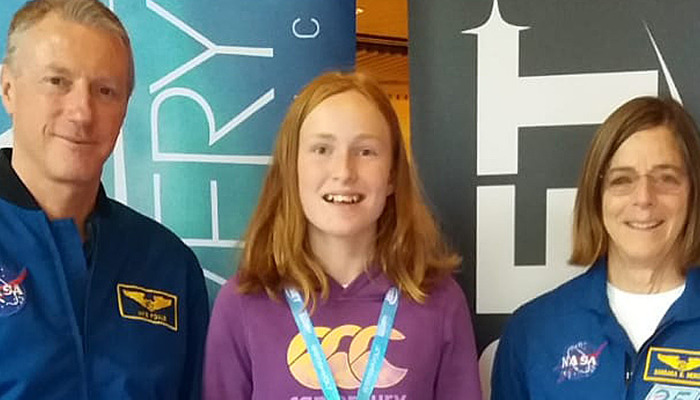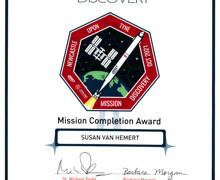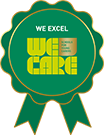Life @ EA

Mission Discovery
EA pupil Susan van Hemert reflects on her time at the Mission Discovery workshop in Newcastle.
In the week of the 24th of September 2021, I went to Mission Discovery Newcastle, a workshop run by NASA and ISSET.
We had talks from astronauts, NASA employees and inspirational people. Personally, I found Mike Foale’s speeches incredible. Mike Foale is an American astronaut and has been on six space missions, on both the International Space Station (ISS) and Mir (the Russian space station). Mike Foale told us a story when he was on Mir in June 1997 and an un-crewed Progress supply ship crashed into the station, smashing a solar panel and breaching the hull. The main power cut out, air was leaking out of the station and the entire station started spinning as the gyroscopes relied on power. Mike Foale told us that he had to look out the window and count the timing of the stars flying past so mission control could fire thrusters to bring it back under control.
We did our own research during the week. My team found out that astronauts can lose up to 40% of their muscle mass in 6 months during their time in microgravity which can affect their ability to work, this is called muscle atrophy. My team wanted to find out if there was a way to slow down muscle atrophy and we proposed an experiment the astronauts could take to the international space station. Our experiment suggested using worms as they are small and have muscles to move around. If the worms get muscle atrophy, they would move less. Our idea was to have three petri dishes with worms. By giving the worms only soil (group 1), soil and protein powder (which bodybuilders use to build muscle) (group 2) and folic acid (which helps stem cells differentiate into muscle cells) (group 3), we wanted to see if the worms consuming protein powder or folic acid moved more than worms consuming soil after a week in microgravity.
Our hypothesis was:
- The worms will lose muscle mass in space as gravity is no longer pushing down on them so after 7 days we expect the worms to move less
- Adding protein powder and folic acid to the soil which the worms feed on, will help to build muscle, so we expect to see less muscle atrophy and more movement in those worms
At the start of the experiment and after one week of the worms being in microgravity, the astronauts had to do a survey on how the worms looked:
– How many of the worms are alive (moving)? (1 minute)
– Count the amount of times a worm comes to the surface of the petri dish. (1 minute)
– Rate the amount of movement the worms from 1 to 5: (1 minute)
- No movement
- Barely any movement (more than 20 seconds between movements)
- Some movement (between 10 and 20 seconds between movements)
- Regular movement (less than 10 seconds between movements)
- Constant movement
– Repeat for all three petri dishes (Total 9 minutes)
The other group presented these ideas: looking to find out if materials rust slower in microgravity and was testing different coating methods; finding out if red algae will grow faster in microgravity; testing if pestalotiopsis microspora, a plant which is capable of breaking down and digesting polyurethane plastic, can survive and break polyurethane down faster in microgravity and; testing different sterilising methods.
The winner of the competition was the group looking at different sterilising methods. The judging panel said reducing the time astronauts spend on cleaning and sterilising was very important.
I had a really interesting time at the NASA workshop in Newcastle, I learned a lot about space missions, science and how to work together with a group of pupils from other schools to present an idea for a new experiment.
I would recommend anyone who gets a chance to do anything like this to go for it, as it taught me so much more than just about space, like working in a group and presentation skills.







